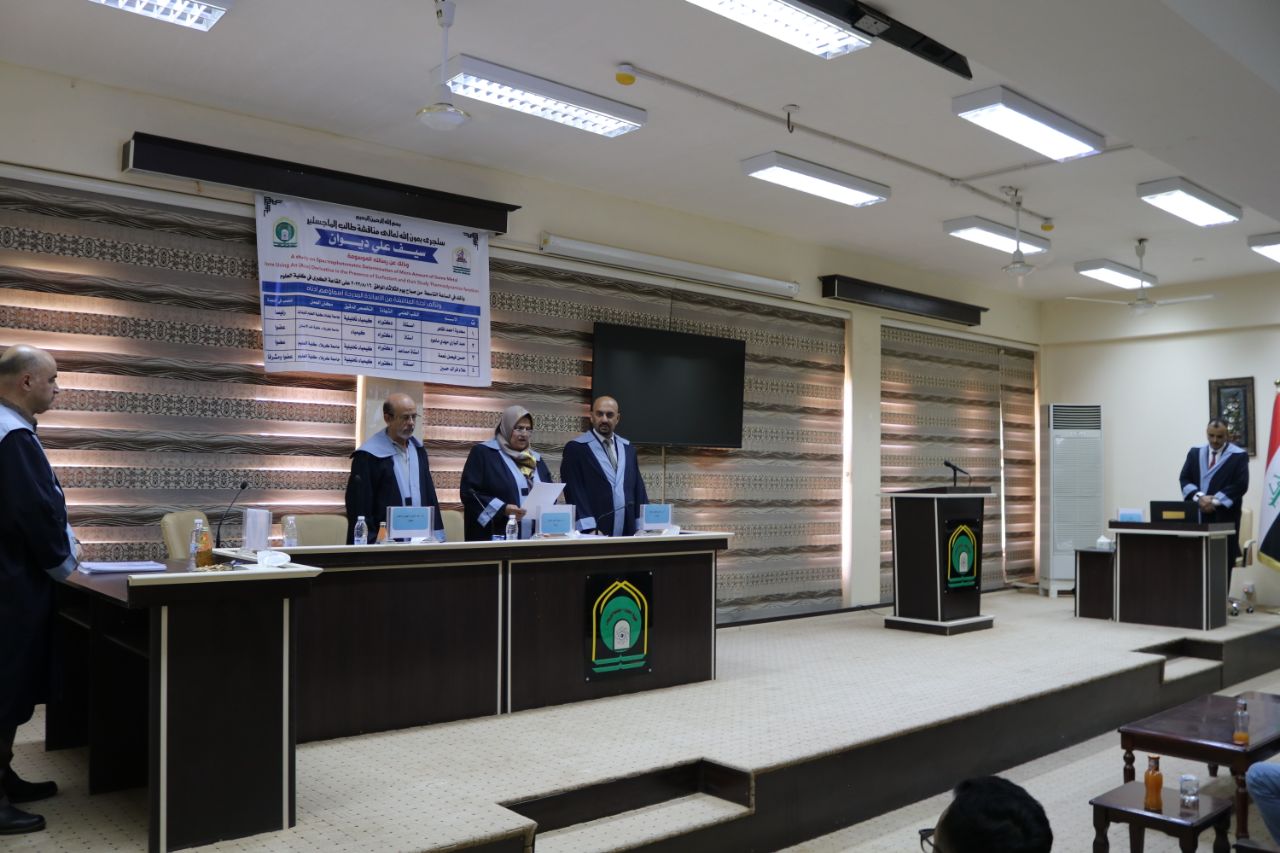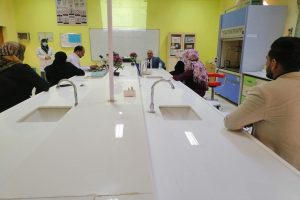A master’s thesis at the College of Science at the University of Kerbala has discussed a study on the spectroscopic measurement of the micro-quantity of some metallic ions using the An (azo) derivative in the ability of surfactants and the study of thermodynamics, by Saif Ali Dewan.
The study aimed to test a new reagent from the Azo derivative that is isolated and purified in the solid state. As well as, to study the optimal conditions for the determination of ions (Ni+2, Hg¹2) with the prepared reagent such as concentration according to Lambert-Beer’s law, for each ion. Also, to know the nature of the association between the ligand and the ion by finding the ratio between Ions and reagents, identification of solid complexes and identification of some physical properties. In addition to diagnosing bonding and complexes prepared by ultraviolet versus ultraviolet radiation techniques. It clarifies an applied study of the method of estimating ions on some samples of legumes (beans, beans, lentils), well water samples and tap water.
The study has concluded the possibility of preparing the reagent (DPIDA) through the conventional nitrogen of the diazonium salt compound and using a spectrophotometer. As it contains coloured complexes. For acidic function, reagent volume, addition sequence and temperature, since compliance with the Lambert-Beer law gives a wide range of concentrations and determination of the valency of the two compounds by molar ratios, function method and Mollard’s method that the ratio of reagent to ion has the effect of a masking agent that (ammonium thiocyanate) does not affect On the process of determination of nickel (II), so it can be used as a masking agent and does not affect the process of determination of the mercury (II) ion, and it can also be used as a masking agent for the mercury(II) ion.
The study recommended the possibility of using the detector (DPIDA) for the determination of other ions in different media. As well as preparing new derivatives of the same reagent for the purpose of improving the selectivity and properties and the possibility of using them in the estimation of other elements, and using the prepared reagent in studying the extraction of some transition elements due to its ability to compatibility with many of these ions and studying the chromatographic behaviour of the reagent and complexes under study in aqueous and medium. The appendix is to know the preference or congruence of the results and to study the effect of the prepared reagent on the biological activity due to the great importance of the azo compound in inhibiting the biological activity.






























































